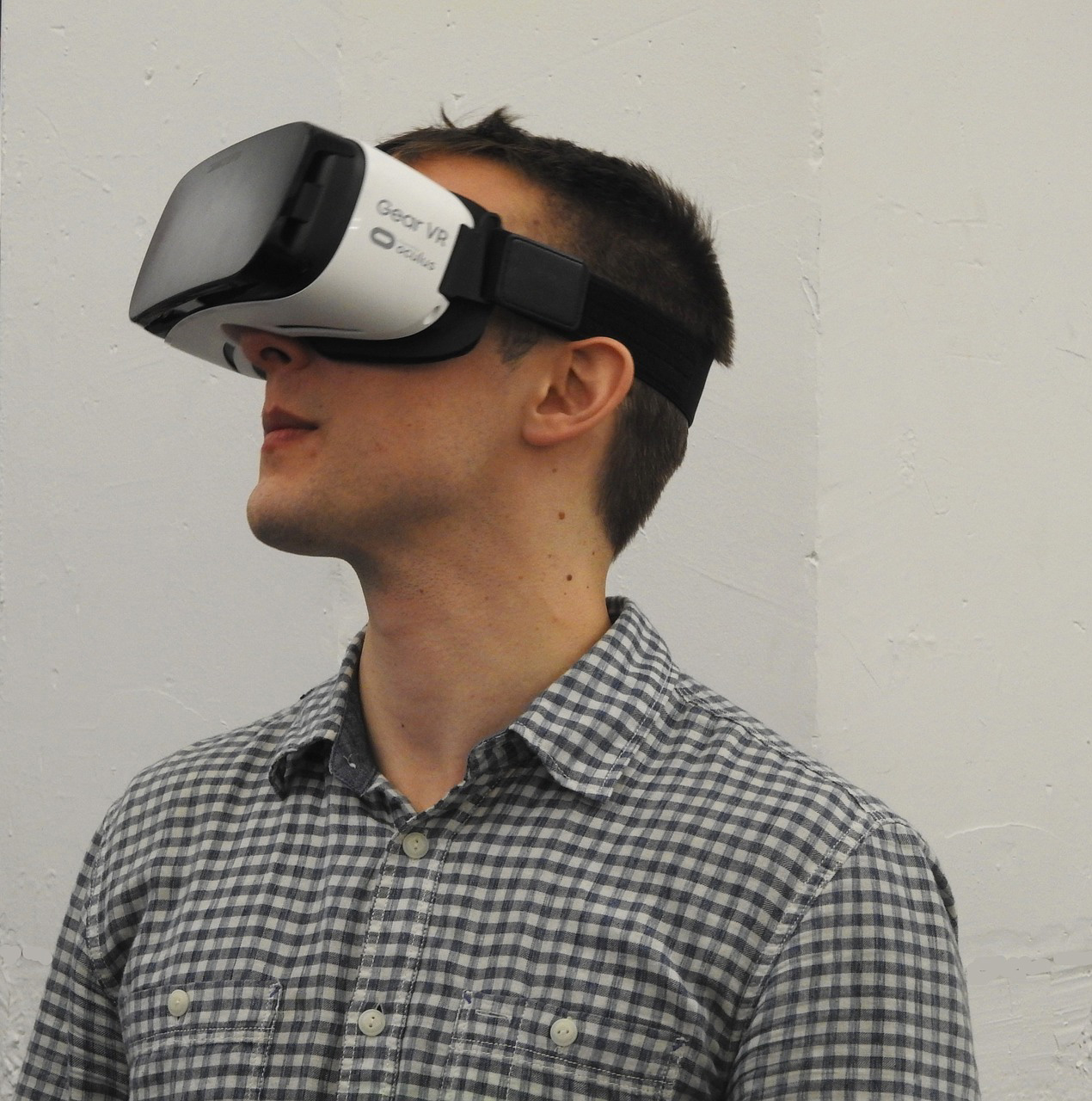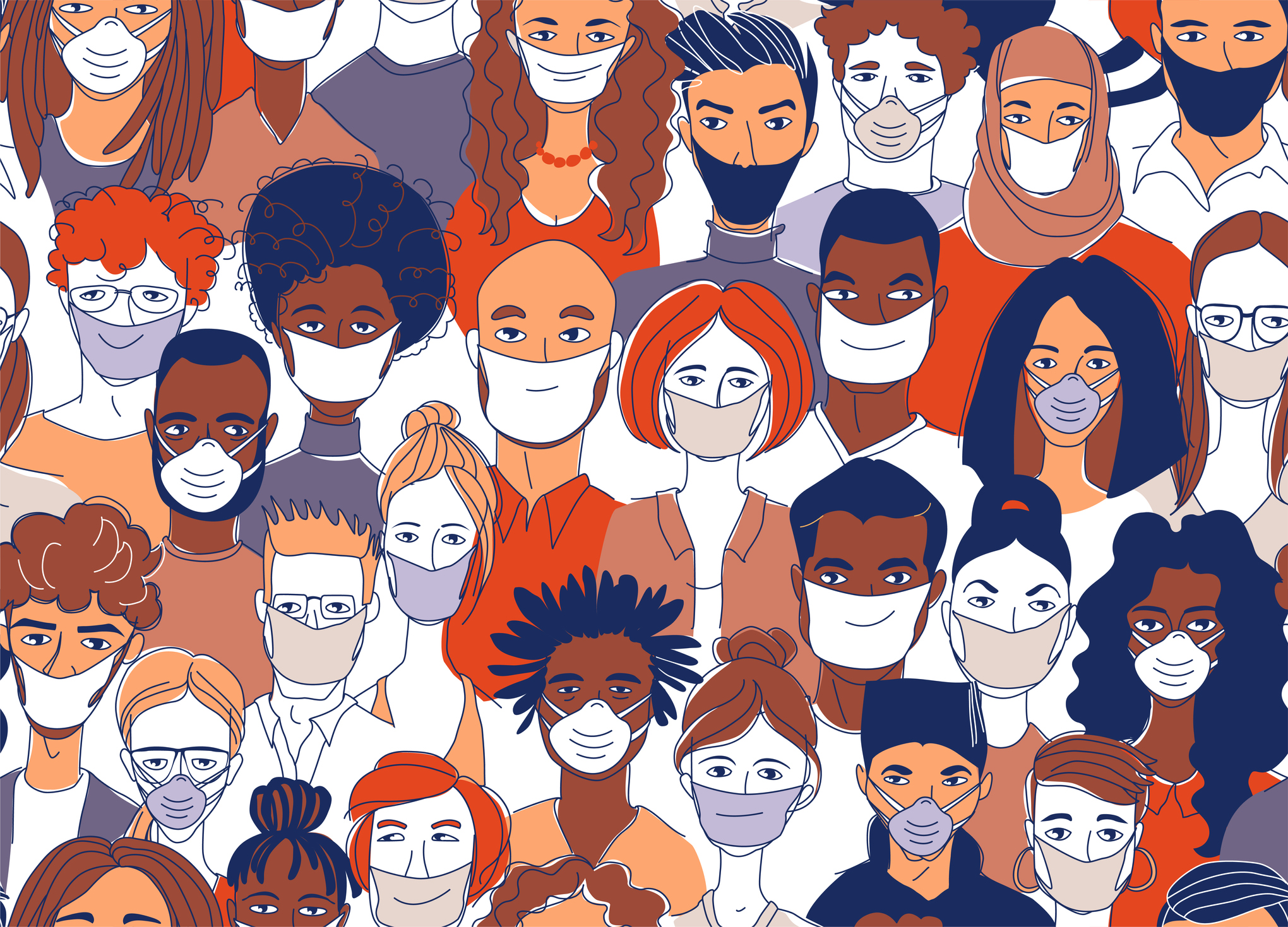Virtual reality allows users to assume the first-person perspective of a rockstar or assassin, a soldier or spacecraft pilot. It’s an incredible technology that places the player within a different world, foreign from their own — an environment they can manipulate like any other. Possibilities for innovation and reinvention are boundless.
Naturally, the potential of VR technology extends far beyond recreation. Those who use it for entertainment can immerse themselves in the role of a sharpshooter and fire at zombies for target practice, of course, but this doesn’t take full advantage of the system’s functionality. It has other utilities that make it attractive.
Virtual Reality technology can be helpful
in the treatment of mental disorders.
VR technology shows significant promise in psychology and psychiatry. In coordination with conventional techniques and medicinal solutions, a headset can help treat mental disorders, and many individuals can attest to its success. How does virtual reality aid in treatment, and which conditions can it manage?
In this article, we’ll answer these questions and others like them, taking a look at the fascinating relationship between virtual reality and mental health.
Common Misconceptions
Psychiatry doesn’t have a “cure” for every mental illness, just like there is no cure for every physical malady. Though the right course of medication can suppress the symptoms of a disorder, it doesn’t dispel the disorder entirely. Individuals who suffer from mental health issues cope through therapy and other methods.
Schizophrenia, depression, bipolar disorder and other illnesses like them are not simple to fix. Professional counseling can lead to an improved outlook and positive changes in behavior, but relapses are always possible. In many cases, a relapse is often probable, so any fresh innovations in treatment deserve attention.
More than that, these innovations are essential to the health and wellness of afflicted individuals. Many of them choose to stop taking their medication upon feeling better, and the side effects of certain prescriptions can cause long-term health problems. Fortunately, virtual reality can increase the efficacy of these solutions.
Virtual Reality and PTSD
Audio therapy for veterans with PTSD proves that sound can have a profound effect on the brain. By using a Bio-Acoustical Utilization Device (BAUD), symptoms of PTSD such as anxiety and anger can be limited or even eliminated. Much like this kind of sensory treatment, VR works with various senses to help treat patients with similar mental health conditions.
Many psychologists use a technique called “exposure therapy,” which prompts patients to place themselves within an environment where they feel discomfort. They have to confront their fears and work past them, developing methods to endure their anxiety. Gradually, over time, they can begin to acclimate.
The Miami VA and PTSD
Providers at the Miami VA Healthcare System have implemented virtual technology into their current practices. Through the use of virtual reality, they hope to address the effects of post-traumatic stress disorder in veterans, a mental illness that often results in isolation and depression. They’ve seen significant progress.
Many patients at the Miami VA Healthcare System report reduced stress when dealing with painful memories, and professionals attribute much of their progress to prolonged exposure therapy. The way in which this traditional technique works in conjunction with virtual reality shows ingenuity on the part of providers.
Those who choose to participate begin their first VR session during their third visit. Therapists equip them with a VR headset with video goggles, a plastic replica of an M-4 rifle and a control that maneuvers a virtual Humvee. Patients then recount their traumatic experiences, which therapists simulate down to the smallest detail.
After the session concludes, therapists review their notes and have a discussion with the patient. Multiple sessions and discussions help the patient understand and process their experience, adjusting to the difficult memory. With time and persistence, this technique guides them forward on their path of recovery.
Virtual Reality and Phobias
Many mental health professionals would agree that exposure therapy is an effective treatment. In some circumstances, however, traditional exposure therapy isn’t a realistic option that a provider can pursue. They might not have the means, or the situation itself that could prove perilous to their patient.
A person suffering from a fear of driving, or vehophobia, might endanger themselves or another on a short cruise around their neighborhood. A person suffering from a fear of flying, or aviophobia, can’t reasonably purchase dozens of airplane tickets to condition themselves to the experience.
To combat these phobias and many like them — fear of spiders, elevators, heights, thunderstorms and even public speaking — virtual reality is the perfect solution. They can address the cause of their anxiety within a safe space, under the supervision of a professional. There’s no risk or danger involved.
Patients can repeat the same simulations over and over until they feel adequately comfortable with the subject of their distress. Then, they can take that cruise around the neighborhood without the worry of colliding with a pedestrian or board an airplane and take their seat beside the window for a far lower price.
Virtual Reality and Diagnosis
But more than its function in exposure therapy, virtual reality also has the potential to help diagnose mental health disorders. With the subjective nature of personality and the complexity of the human brain, VR technology can shed new light on the old processes that determine a course of treatment.
Many mental disorders share symptoms, and it’s entirely plausible that a medical professional would misdiagnose their patient. This initial mistake could result in an ineffective prescription that fails to treat the illness properly. Depending on the disorder, the wrong medication could even exacerbate it.
A person might visit their physician and detail the symptoms of major depression, and that physician might prescribe a standard antidepressant. In a month’s time, the patient spirals into a manic episode brought about by the wrong medication. Their symptoms of depression were the first indicator of bipolar disorder.
Because clinical interviews and questionnaires are the basis of psychiatric diagnosis, these conclusions aren’t always accurate. But through the integration of virtual reality in the assessment of disorders, professionals can place their patients in controlled environments that provoke and reliably measure symptoms.
In multiple studies, virtual reality proved an effective tool in the evaluation of individuals with schizophrenia. Researchers looked at how their subjects interacted with other avatars, taking note of deviations in social behavior. Schizophrenic patients had difficulty recognizing emotions displayed on virtual faces.
Can VR Techonolgy Help Patients with ADHD?
Researchers also investigated the effect of virtual reality on patients with attention-deficit hyperactivity disorder. In a simulated classroom environment, participants fought through distractions as they conducted tasks from a traditional continuous performance test. This experiment and many like it have great potential.
Benefits and Challenges
Whether a psychiatrist employs virtual reality to accurately diagnose a patient, or a stressed grocery clerk uses it to meditate, these headsets have a broad range of mental health benefits. Advances in the technology will only add to this long list of advantages, opening up new possibilities for innovation.
Like previously mentioned, patients who use virtual reality to combat their phobias can enter unsafe environments without risk. They enjoy supervision as they confront their anxieties, with the guidance of a credentialed professional who can make suggestions and lead them in the right direction.
Standard exposure therapy can prove costly if conducted outside of a psychologist’s office, and there’s a risk to patient confidentiality. Within an enclosed space, they can maximize their time and money while eliminating the chance that a friend or colleague will see them. This allows for greater comfort.
Challenges in Using This Treatment
But virtual reality still has its drawbacks and challenges. Some providers are unable to afford the technology or find programs applicable to the unique requirements of their patients. That said, the growing popularity of VR will reduce the cost of the equipment over time, making availability less of an issue.
In addition to the high price point for some headset models, the experience itself is very vivid. Patients who aren’t accustomed to the immersive quality of virtual reality might have a negative response and panic. It’s the responsibility of mental health professionals to communicate this risk beforehand.
Psychology and the Senses
It’s true that traditional talk therapy is helpful for some, and this point is difficult to argue. Regular appointments with a therapist can keep mental disorders in check, and these professionals can teach their patients different methods of coping with stress. This is standard, and for the most part, it works.
While these conventions exist for a reason, progress requires adaptation, and providers are meant to use all of the resources at their disposal. Engaging a patient in a sensory experience can achieve incredible results, and studies reflect this. Something as simple as sound can have a profound effect on the brain.
Not too far in the future, the incorporation of other senses into virtual reality can provide an even more powerful experience for patients suffering from disorders. What form this will take and what it will look like is anyone’s speculation, but these changes are inevitable. This progress is not only exciting but important.
Related Virtual Reality Content: How Virtual Reality is Changing Healthcare for the Better
The Final Takeaway
Virtual reality allows users to assume the first-person perspective of a rockstar or assassin, a soldier or spacecraft pilot. It also allows a person suffering from mental illness to heal, recover, grow and learn. They can confront their fears, work past their issues and find new solutions to old problems.
Plus, if they’ve always wanted to hang glide over a Martian landscape, there’s no reason they can’t do that, as well.
Kayla Matthews
Website:
http://www.productivitybytes.com
Kayla Matthews is a journalist and MedTech writer who has been writing about technology for nearly a decade, which has helped her gain a new perspective on various innovations across the healthcare industry.
After graduating Summa Cum Laude from Shippensburg University with a B.A. in English, her journey led her to discover a passion for writing paired with an interest in cutting-edge tech, which is when she started blogging.
Since then, she's been recognized as IBM's 2018 THINK Conference VIP Influencer and has showcased new medical discoveries via Medical Economics, HIT Consultant, Digital Trends, VentureBeat, Inc.com, The Healthcare Guys and more. Her pieces have discussed a variety of medtech topics, from devices and trending gadgets to how healthcare fraud is affecting medical professionals.
To read more medical and tech news articles by Kayla, check out her website Productivity Bytes or follow her on Twitter @KaylaEMatthews.
Comments:
Leave a Reply
Comment will held for moderation
















Dr. Salber – the other aspect – is that these VR goggles are readily accessible to the public now.
Question: when I saw this article promoted on social media from site “the doctor weighs in,” I would naturally assume it was written by a medical professional. My understanding, however, is the author is a tech blogger. Isn’t it responsible to make it clear that this is a “guest column,” and not by a medical professional here?
Hi Jeff, we include bios of all our authors at the end of the story. Many of our writers are medical professionals, but some are freelance writers with various backgrounds. How besides having bios would you suggest letting our readers know the author’s background?
Dr. Salber – the simple and common practice done regularly is in the title: “Guest Column from XXX: Title of Column”
Subtitle: “XXX is a YYY (their background).”
Now everyone is on the same page. Yes, it would be helpful to believe everyone will read to the end, but that doesn’t happen. And with Twitter posts, many won’t actually even look at the article, but just assume this is “advice” from “the doctor weighs in.”
As you know you are reaching out to a very broad audience, especially in this case. There are many Americans with mental health challenges, and many with dementia challenges. It was from a dementia advocate on social media that I saw this article. As you know, caregiving for someone with dementia is complex. I would suggest some real caution here in this case. There are ways to provide interaction for those with cognitive challenges, YouTube videos sitting with caregivers, Nintendo Wii games, etc., which can provide help and stimulation in controlled and most importantly a “shared” environment with caregiver personnel.
But when this comes out, and it is from “The Doctor Weighs In,” remember there are a lot of people who will believe this is from someone offering medical advices. There are also a lot of very desparate caregivers out there. This may help people with cognitive challenges, but it really needs to be watched – as I am a former dementia caregiver, and understand dynamics here.
A tech blogger, even well-intended, may not fully appreciate this. Thanks for listening.
Thank you for your thoughtful comment. We will discuss this internally. Our goal is to always give our readers information they can count on. Pat